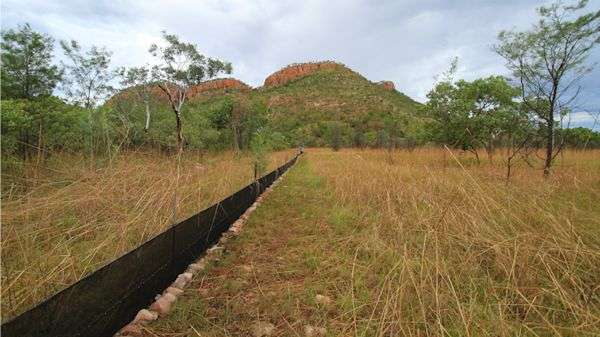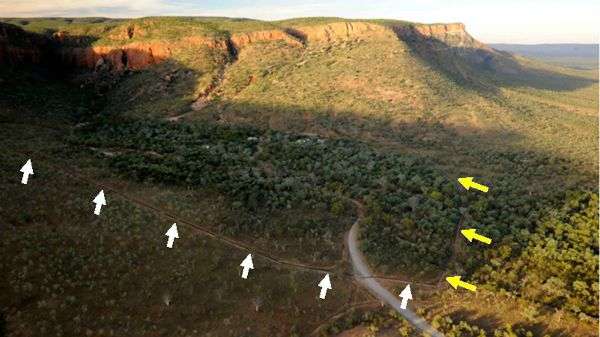Kimberley fence captures animals' 'dry season shuffle'
![The captured species comprised of amphibians including the ornate burrowing frog (Platyplectrum ornatum [pictured]), reptiles like the sandstone snake-necked turtle (Chelodina burrungandjii) and mammals. Credit: Robert Whyte Kimberley fence captures animals’ ‘dry season shuffle’](https://scx1.b-cdn.net/csz/news/800a/2015/kimberleyfen.jpg)
Fencing the entire entrance to Emma Gorge in the Kimberley's El Questro Wilderness Park, has revealed its importance as a refuge for an entire community of small animals.
In what American researcher Sean Doody termed their 'dry season shuffle', the researchers observed small vertebrates find respite in the cooler, shaded gorge walls that retain deep, permanent water holes.
"There haven't been any studies that have shown this; a whole assemblage of invertebrates moving in and out of a gorge," he says.
Prof Doody says fencing the 1.7km gorge mouth provided a unique opportunity to study vertebrate's mass migration in tropical savannah ecosystems, normally impossible because of the cost and logistics of building the fence.
However, the gorge on El Questro Station, 110km west of Kununurra, had an existing cattle fence which was converted to a toad-proof fence by the Stop the Toad Foundation in 2011.
Using that barrier, scientists set a trapline in 2011 and again in 2012 (with 47 traps and 62 traps respectively), to investigate the movement of animals from creeks to the gorge.
Traps were paired on each side of the fence and checked daily, resulting in the capture of 1590 vertebrates comprising 60 species.
The captured species comprised of amphibians including the ornate burrowing frog (Platyplectrum ornatum), reptiles like the sandstone snake-necked turtle (Chelodina burrungandjii) and mammals.

Prof Doody says most animals were moving into the gorge and were captured outside the fence rather than on the inside.
He says some results surprised researchers, particularly the movement of terrestrial species like snakes into the gorge, who were perhaps tracking prey.
"The turtles were also really surprising—you might think they'd move downstream as dry conditions set in because if they went far enough downstream they would reach the King River," he says.
"But what a sandstone gorge can provide is permanent water and deep pools that are safe harbour for the turtles, so they went upstream instead of downstream."

Prof Doody says they were also surprised at finding burrowing frogs, which are active in the wet and burrow to sleep in the dry.
"There's a little lesson there about how frogs get through the dry season;—we assumed they'd bury themselves where they were when the water receded but found they get into the gorge before they burrow," he says.
He says the results suggest a general pattern across the Kimberley and even northern Australia of animals using gorges as dry season refuges.
More information: "The Dry Season Shuffle: Gorges Provide Refugia for Animal Communities in Tropical Savannah Ecosystems." DOI: 10.1371/journal.pone.0131186
Provided by Science Network WA



















